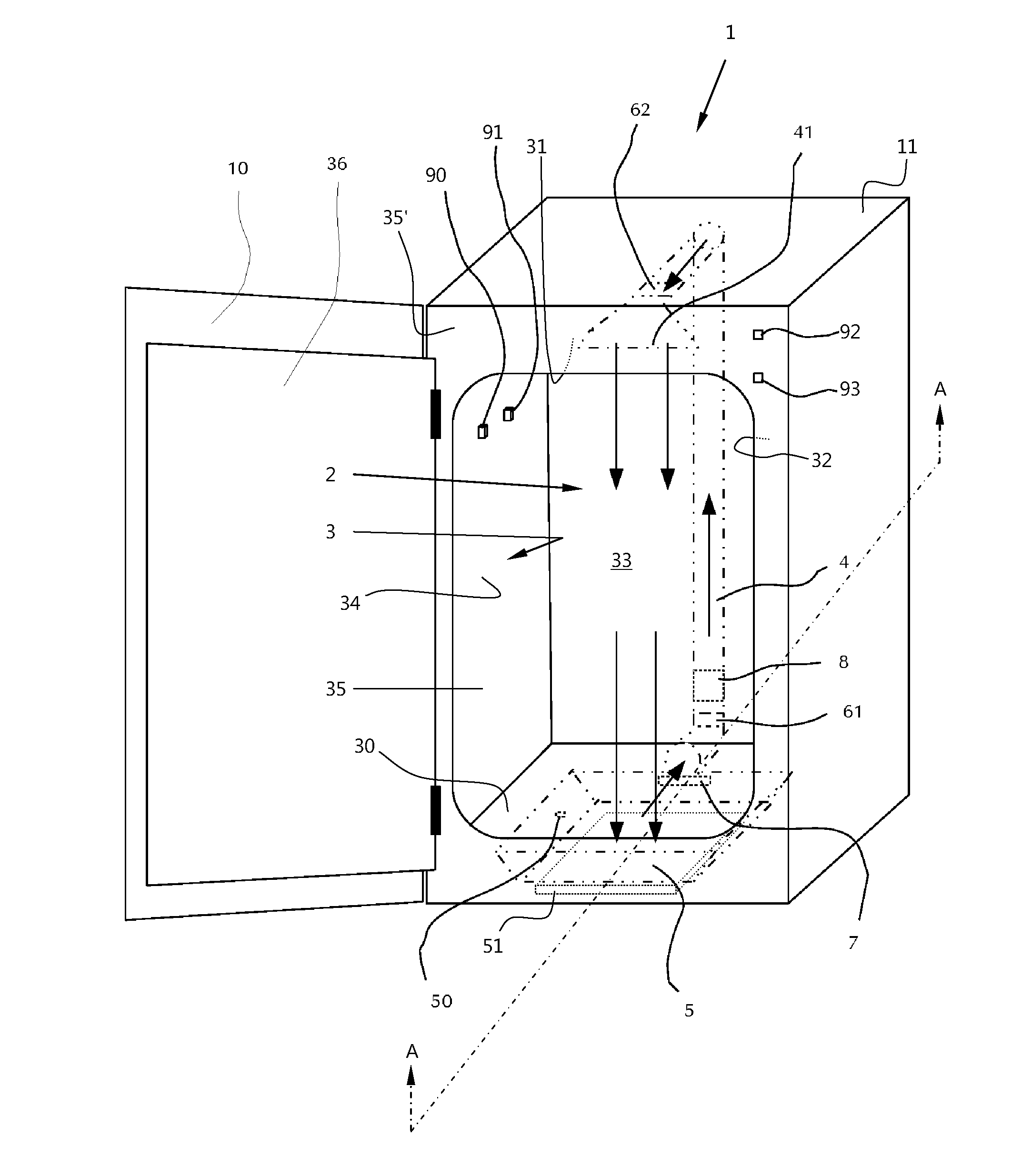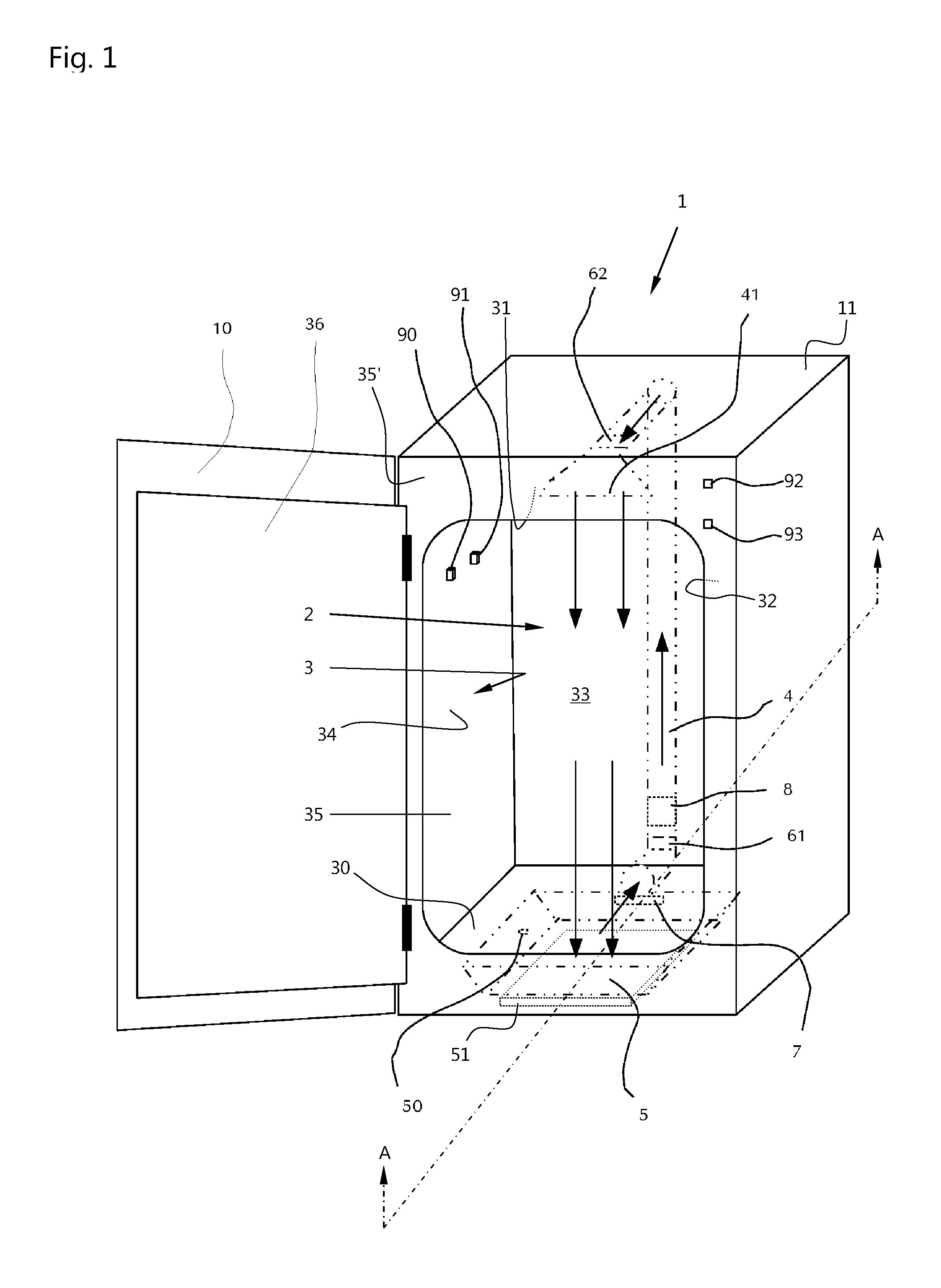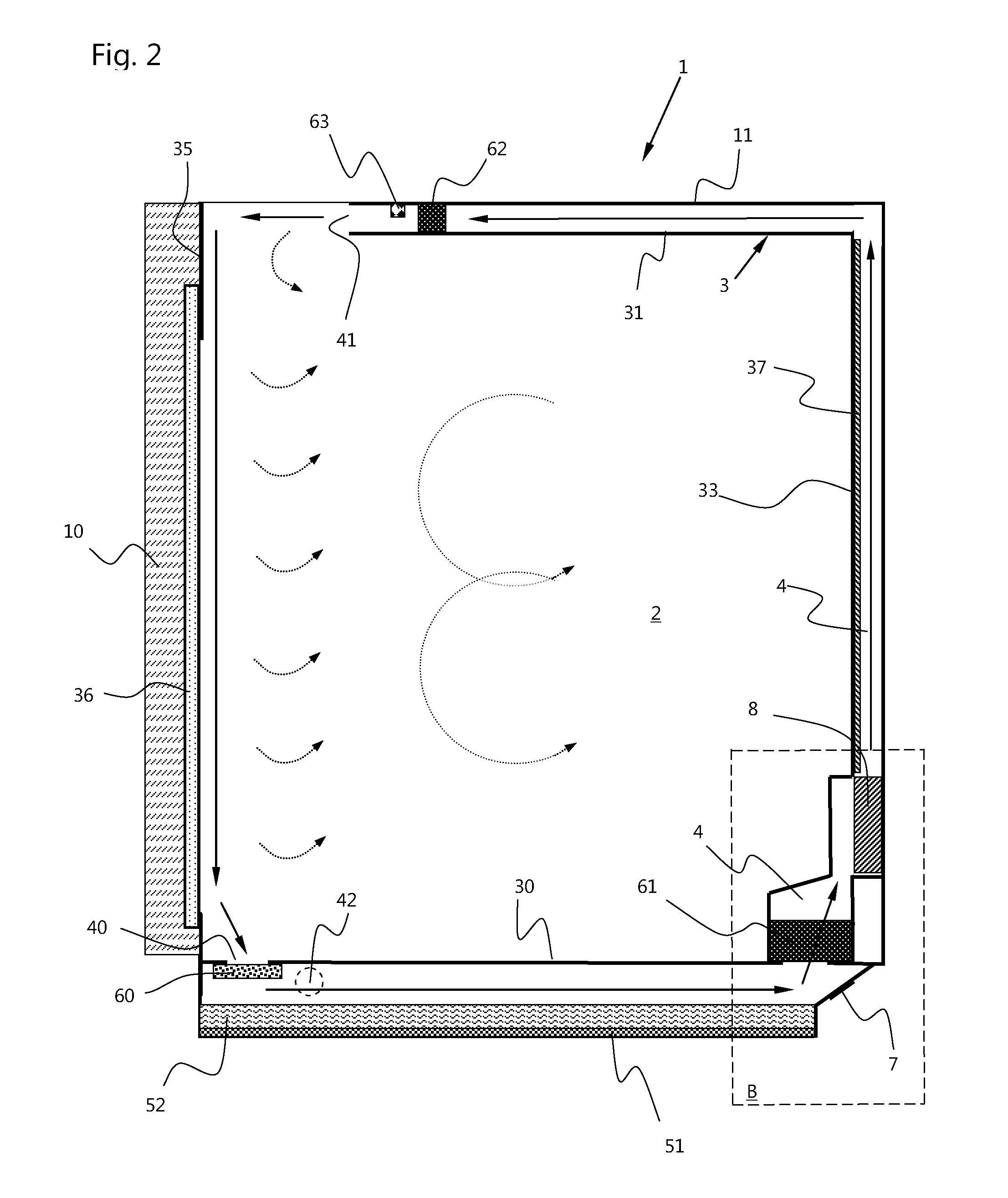Laboratory Incubator Having Improved Moisture Distribution
a technology of incubator and humidifier, which is applied in the direction of apparatus sterilization, specific use of bioreactor/fermenter, and after-treatment of biomass, to achieve the effect of preventing the pollution of the fan, reducing the number of clogging, and increasing the resistance to flow
- Summary
- Abstract
- Description
- Claims
- Application Information
AI Technical Summary
Benefits of technology
Problems solved by technology
Method used
Image
Examples
Embodiment Construction
[0035]FIG. 1 shows a laboratory incubator 1 according to the present invention, in this case, by example of a gassing incubator, in a front view of the front side. The laboratory incubator comprises an outer housing 11 containing an outer door 10, enabling access to an internal chamber 2. The internal chamber 2 is enclosed by an inner housing 3 consisting of a floor 30, side wall panels 32, 33, and 34, and a ceiling panel 31. The lateral surface panel 35 facing the operator is open except for a front bezel 35′ and provides access to the internal chamber 2. The lateral surface panel 35 may be closed by means of an additional, inner door 36 made of glass, for example. In the situation illustrated, both doors 10 and 36 are shown as being open.
[0036]The internal chamber 2 serves to store samples, for example, microbiological samples, that may be stored on trays mounted inside the internal chamber. For reasons of clarity, however, samples and trays are not shown. For the purpose of stori...
PUM
| Property | Measurement | Unit |
|---|---|---|
| humidity | aaaaa | aaaaa |
| humidity | aaaaa | aaaaa |
| humidity | aaaaa | aaaaa |
Abstract
Description
Claims
Application Information
 Login to View More
Login to View More - R&D
- Intellectual Property
- Life Sciences
- Materials
- Tech Scout
- Unparalleled Data Quality
- Higher Quality Content
- 60% Fewer Hallucinations
Browse by: Latest US Patents, China's latest patents, Technical Efficacy Thesaurus, Application Domain, Technology Topic, Popular Technical Reports.
© 2025 PatSnap. All rights reserved.Legal|Privacy policy|Modern Slavery Act Transparency Statement|Sitemap|About US| Contact US: help@patsnap.com



